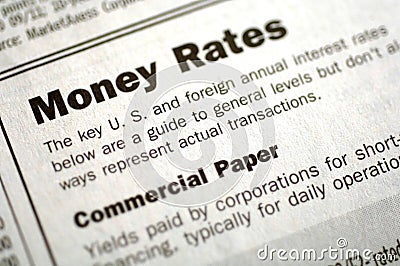Warrants and call options are securities that are quite
similar in many respects, but they also have some notable differences. A
warrant is a security that gives the holder the right, but not the
obligation, to buy a common share directly from the company at a fixed
price for a pre-defined time period. Similar to a warrant, a call option
(or “call”) also gives the holder the right, without the obligation, to
buy a common share at a set price for a defined time period. So what
are
the differences between these two?
Difference Between Warrants and Call Options
Three major differences between warrants and call options are:
-
Issuer: Warrants are issued by a specific
company, while exchange-traded options are issued by an options exchange
such as the Chicago Board Options Exchange in the U.S. or the Montreal
Exchange in Canada. As a result, warrants have few standardized
features, while exchange-traded options are more standardized in certain
aspects such as expiration periods and the number of shares per option
contract (typically 100).
-
Maturity: Warrants usually have longer
maturity periods than options. While warrants generally expire in one to
two years, and can sometimes have maturities well in excess of five
years, call options have maturities ranging from a few weeks or months
to about a year or two, although the longer-dated options are likely to
be quite illiquid.
-
Dilution: Warrants cause dilution because a
company is obligated to issue new stock when a warrant is exercised.
Exercising a call option does not involve issuing new stock, since a
call option is a derivative instrument on an existing common share of
the company.
Why are Warrants and Calls Issued?
Warrants are typically included as a “sweetener” for an equity or debt
issue. Investors like warrants because they enable additional
participation in the company’s growth. Companies include warrants in
equity or debt issues because they can bring down the cost of financing
and provide assurance of additional capital if the stock does well.
Investors are more inclined to opt for a slightly lower interest rate on
a bond financing if a warrant is attached, as compared with a
straightforward bond financing.
Option exchanges issue exchange-traded options on stocks that fulfill
certain criteria, such as share price, number of shares outstanding,
average daily volume and share distribution. Exchanges issue options on
such “optionable” stocks to facilitate hedging and speculation by
investors and traders.
Examples
The basic attributes of a warrant and call are the same, such as:
-
Strike price or exercise price – the price
at which the warrant or option buyer has the right to buy the underlying
asset. “Exercise price” is the preferred term with reference to
warrants.
-
Maturity or expiration – The finite time period during which the warrant or option can be exercised.
-
Option price or premium – The price at which the warrant or option trades in the market.
For example,
consider a warrant
with an exercise price of $5 on a stock that currently trades at $4.
The warrant expires in one year and is currently priced at 50 cents. If
the underlying stock trades above $5 at any time within the one-year
expiration period, the warrant’s price will rise accordingly. Assume
that just before the one-year expiration of the warrant, the underlying
stock trades at $7. The warrant would then be worth at least $2 (i.e.
the difference between the stock price and the warrant’s exercise
price). If the underlying stock instead trades at or below $5 just
before the warrant expires, the warrant will have very little value.
A call option trades in a very similar manner. A call option with a
strike price of $12.50 on a stock that trades at $12 and expires in one
month will see its price fluctuate in line with the underlying stock. If
the stock trades at $13.50 just before option expiry, the call will be
worth at least $1. Conversely, if the stock trades at or below $12.50 on
the call’s expiry date, the option will expire worthless.
Intrinsic Value and Time Value
While the same variables affect the value of a warrant and a call
option, a couple of extra quirks affect warrant pricing. But first,
let’s understand the two basic components of value for a warrant and a
call – intrinsic value and time value.
Intrinsic value
for a warrant or call is the difference between the price of the
underlying stock and the exercise or strike price. The intrinsic value
can be zero, but it can never be negative. For example, if a stock
trades at $10 and the strike price of a call on it is $8, the intrinsic
value of the call is $2. If the stock is trading at $7, the intrinsic
value of this call is zero.
Time value
is the difference between the price of the call or warrant and its
intrinsic value. Extending the above example of a stock trading at $10,
if the price of an $8 call on it is $2.50, its intrinsic value is $2 and
its time value is 50 cents.
The value of an option
with zero intrinsic value is made up entirely of time value. Time value
represents the possibility of the stock trading above the strike price
by option expiry.
Valuation
Factors that influence the value of a call or warrant are:
-
Underlying stock price – The higher the stock price, the higher the price or value of the call or warrant.
-
Strike price or exercise price – The lower
the strike or exercise price, the higher the value of the call or
warrant. Why? Because any rational investor would pay more for the right
to buy an asset at a lower price than a higher price.
-
Time to expiry – The longer the time to expiry, the pricier the call or warrant.
-
Implied volatility – The higher the
volatility, the more expensive the call or warrant. This is because a
call has a greater probability of being profitable if the underlying
stock is more volatile than if it exhibits very little volatility.
-
Risk-free interest rate – The higher the interest rate, the more expensive the warrant or call.
The Black-Scholes model is the most commonly used one for pricing
options, while a modified version of the model is used for pricing
warrants. The values of the above variables are plugged into an option
calculator, which then provides the option price. Since the other
variables are more or less fixed, the implied volatility estimate
becomes the most important variable in pricing an option.
Warrant pricing is slightly different because it has to take into
account the dilution aspect mentioned earlier, as well as its “gearing".
Gearing is the ratio of the stock price to the warrant price and
represents the leverage that the warrant offers. The warrant's value is directly proportional to its gearing.
The dilution feature makes a warrant slightly cheaper than an identical
call option, by a factor of (n / n+w), where n is the number of shares
outstanding, and w represents the number of warrants. Consider a stock
with 1 million shares and 100,000 warrants outstanding. If a call on
this stock is trading at $1, a similar warrant (with the same expiration
and strike price) on it would be priced at about 91 cents.
Applications
The biggest benefit to retail investors of using warrants and calls is
that they offer unlimited profit potential while restricting the
possible loss to the amount invested. The other major advantage is their
leverage.
Their biggest drawbacks are that unlike the underlying stock, they have a finite life and are ineligible for dividend payments.
Consider an investor who has a high tolerance for risk and $2,000 to
invest. This investor has a choice between investing in a stock trading
at $4, or investing in a warrant on the same stock with a strike price
of $5. The warrant expires in one year and is currently priced at 50
cents. The investor is very bullish on the stock, and for maximum
leverage decides to invest solely in the warrants. She therefore buys
4,000 warrants on the stock. If the stock appreciates to $7 after about a
year (i.e. just before the warrants expire), the warrants would be
worth $2 each. The warrants would be altogether worth about $8,000,
representing a $6,000 gain or 300% on the original investment. If the
investor had chosen to invest in the stock instead, her return would
only have been $1,500 or 75% on the original investment.
Of course, if the stock had closed at $4.50 just before the warrants
expired, the investor would have lost 100% of her $2,000 initial
investment in the warrants, as opposed to a 12.5% gain if she had
invested in the stock instead.
Conclusion
Warrants are very popular in certain markets such as Canada and Hong
Kong. In Canada, for instance, it is common practice for junior resource
companies that are raising funds for exploration to do so through the
sale of units. Each such unit generally comprises one common stock
bundled together with one-half of a warrant, which means that two
warrants are required to buy one additional common share. (Note that
multiple warrants are often needed to acquire a stock at the exercise
price.) These companies also offer “broker warrants” to their
underwriters, in addition to cash commissions, as part of the
compensation structure.
While warrants and calls offer significant benefits to investors, as derivative instruments they are
not without their risks. Investors should therefore understand these versatile instruments thoroughly before venturing to use them in their portfolios.
















































